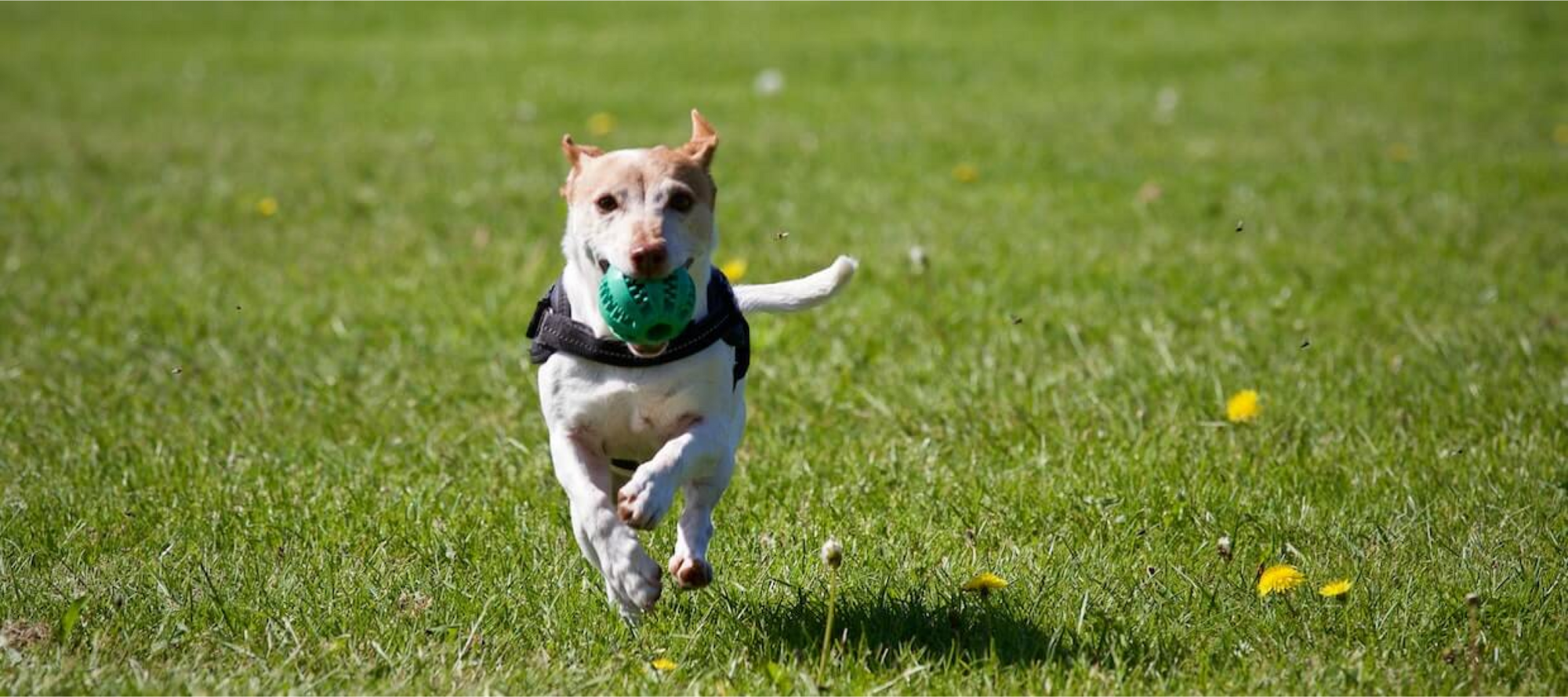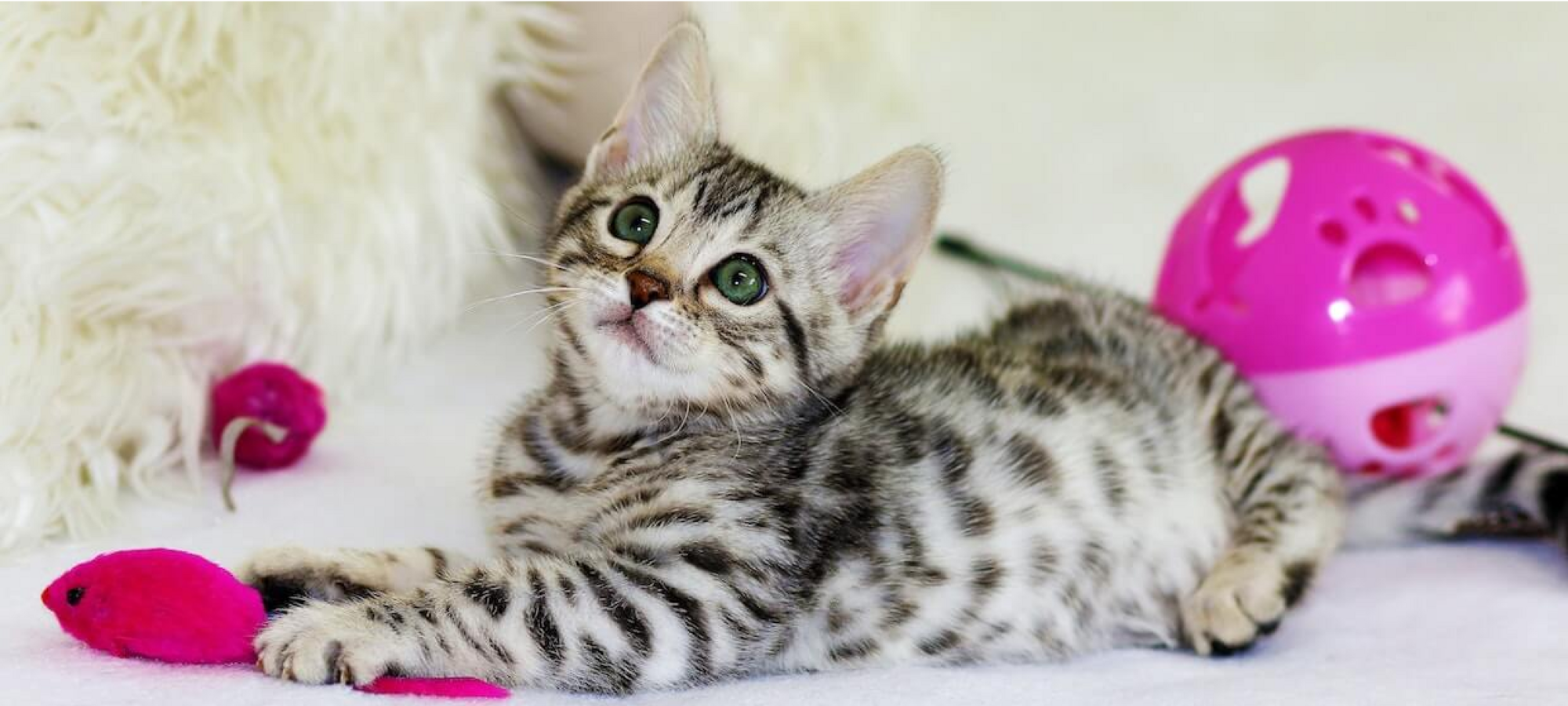Last Updated: 06/05/2025
Pet Toy Safety Tips: What Every Pet Owner Should Know
Pet toys are essential for keeping your pet entertained, mentally stimulated, and physically active, but ensuring their safety is crucial. This article provides an in-depth guide on how to select safe toys for your pets.
Author: Dr Teagan Lever BVSc (Hons)
Reading Time: 3 minutes - short read
Toys are essential for keeping dogs and cats mentally stimulated and physically active, however sadly in some cases they can result in harm.
Potential injuries from toys include:
- Choking or blockage of the intestines from chewed off pieces, strings and ribbons or toys that are too small
- Damage to the teeth from chewing toys which are too hard or abrasive
While no toy is indestructible or guaranteed to be safe, this guide is designed to help you find the safest option for your pet.
Skip to...
Choosing safe dog toys

Dog toys are definitely not one size fits all. When choosing toys, firstly consider the different types of toys your dog will need, as well as their preferred play style (eg chewing!) and their size.
Size
As a rule of thumb, toys should be large enough that they will not fully fit in your dog's mouth, particularly for home alone play. They should not have small pieces that can easily be chewed off and swallowed, remove any tags, buttons, eyes etc from toys prior to letting your dog play with them.
Durability
Durability is a particularly important consideration for larger dogs who like to chew, as a safe toy can quickly become a hazard if chewed into smaller parts. For this reason always supervise your dog closely with new toys, removing them immediately if damaged. If you have a power chewer on your hands, check out the Aussie Dog Tasty Bone and KONG Extreme ranges of durable dog toys.
The flip side to this is that for puppies and older dogs who have less robust teeth should not be offered toys such as nylon bones or extra durable plastics that are very hard, as chewing on these could result in painful tooth fractures.
Play types
Offering your dog a variety of toys rotated regularly is important to keep them mentally stimulated, particularly if they are left home alone for longer periods. While it's good to offer a range of different toy types (eg chew toys, puzzle toys, soft comfort toys), your dog's preferences may make some types of toy less suitable. For example, a power chewing staffy is likely to make short work of most soft toys, while an older toy breed dog is likely to have a lower drive to chew things up and may prefer a comfort toy to snuggle instead.
Want to learn more? Read our guide to choosing the best dog toys.
Choosing safe cat toys

Toys are important for cats as well! Regular interactive play can help to build your bond with your cat, while food dispensing and automated toys are ideal for getting your cat active when you are not home to play.
For cats, the main risk from toys comes from strings and ribbons, as these can become caught around the tongue or cause serious problems if they end up in the gastrointestinal tract. This is unfortunate, because most cats enjoy stalking and chasing long moving objects!
To begin with, start by cat-proofing your home by removing all string like objects which may prove tempting for your feline friend. If your cat enjoys them, teaser toys are a great option, just save them for interactive play so that you can supervise your cat and check them regularly for signs of damage.
For home alone or solo play, automated toys are ideal and come in a range of different types.
Want to learn more? Read about games you can play with your cat.
Further Reading
Want to read more? Check out our other articles:
Want to know more? Check out our Vet Tips Page for more tips on keeping your pets happy and healthy.